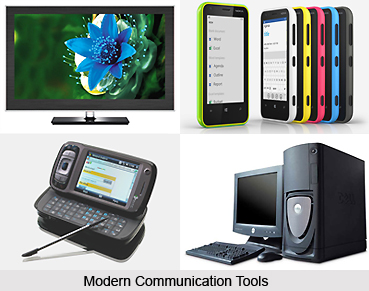 Unlike telephone, radio is a means of wire-free communication. It is a very authoritative medium to broadcast and accept valuable information, news and variety of entertainment programmes, including sports
Unlike telephone, radio is a means of wire-free communication. It is a very authoritative medium to broadcast and accept valuable information, news and variety of entertainment programmes, including sports
There were six radio (Akashwani) stations during the time of Independence. On 1st April 1998 the calculated number was 195. AIR (All India Radio) is reachable to 97.3% of Indian population and 90% of total surface area. It now airs more than 300 news bulletins every day.
Doordarshan is the national television service of India. It was inaugurated in 1959. It is one of the broadest and indispensable networks in the world, with 897 transmitters. It is reachable to 187% of population. It exploits an enormous number of transponders of Indian National Satellites. 350 million viewers view its programmes from their homes. Its commercial advertisements fetched a colossal revenue of Rs. 5,000 million in 1997-98. It has its own production facilities in 42 big cities spanning the country. Now under the `Open Skies` polity, a vast number of private channels have been ascribed to private companies registered in India. Prasar Bharati is a self-governing body. It handles radio and television services under the supervision of a Parliament-Committee.
Cinema is the most accepted mode of leisure in India. It is the vastest producer of feature films in the world. Hindi films are undoubtedly the most prevailing segment. Nearly all the regional languages issue their own films almost ceaselessly. Personal computers and internet services have given rise to an invigourated revolution in the age of flare-up of information technology.















